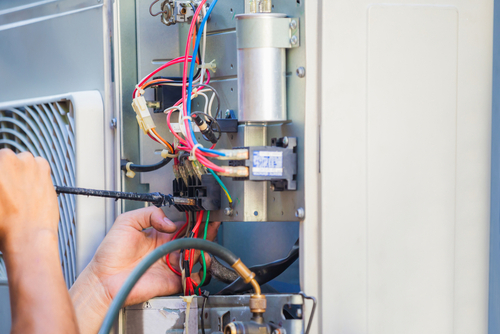Streamline processes with innovative mechanical system optimisation support.
Streamline processes with innovative mechanical system optimisation support.
Blog Article
Leading Tips for Effective Electric System Troubleshooting
Troubleshooting electrical systems needs a methodical strategy, based in a thorough understanding of electric principles and safety protocols. The subtleties of effective fixing extend beyond plain technological knowledge; comprehending just how to record findings and focus on safety and security can dramatically affect outcomes.
Understand the Essentials
Recognizing the basics of electrical systems is essential for reliable troubleshooting, as a strong foundation enables specialists to diagnose and resolve issues much more effectively. A comprehensive grasp of electric principles, such as voltage, existing, resistance, and power, is crucial in determining the origin of troubles. Voltage is the electric possible difference that drives present via a circuit, while resistance opposes the flow of present, impacting the overall performance of the system.
Knowledge with circuit components, including resistors, capacitors, diodes, and switches, is likewise paramount. Each element plays a distinctive function in circuit actions and can impact efficiency when malfunctioning. Additionally, comprehending collection and parallel circuit setups is vital, as these setups affect the circulation of voltage and present within the system.
Specialists must be mindful of possible dangers, such as shock and brief circuits, to carry out safe troubleshooting methods. By understanding these foundational principles, professionals improve their ability to perform reliable diagnostics and repairs, ultimately leading to enhanced efficiency and dependability of electrical systems (electrical system troubleshooting).
Gather Necessary Tools
Reliable troubleshooting of electrical systems needs the best set of devices to detect and solve issues properly. Necessary devices consist of a multimeter, which determines voltage, current, and resistance, enabling for specific analyses of electric components.
Furthermore, protected hand tools such as screwdrivers, pliers, and cable strippers are vital for securely adjusting electric links. It is also recommended to have a circuit tester available to confirm the visibility of voltage in electrical outlets and wires. For more complicated systems, a thermal imaging cam can help discover overheating elements, showing potential failures.

Comply With an Organized Approach
Having actually gathered the ideal tools, the next step in troubleshooting electrical systems is to follow a methodical technique. A methodical strategy guarantees that specialists can recognize faults successfully and properly, minimizing downtime and avoiding unneeded repairs.
Begin by examining the system's schematic diagrams and specs. Comprehending the design and functional specifications will provide context for diagnosing concerns. Next, isolate the issue area by utilizing a procedure of elimination. This involves checking each part methodically, beginning from the power source and working in the direction of the load.
Make use of testing devices, such as multimeters and oscilloscopes, to gather objective data regarding voltage, current, and resistance at numerous points within the system. This empirical evidence will certainly lead your troubleshooting efforts and assist to verify or get rid of prospective sources of failing.
Furthermore, think about environmental aspects that might influence the system's performance, such as temperature level changes or dampness access. An extensive assessment of electrical wiring, connections, and parts will certainly ensure that all opportunities are represented.
File Your Searchings For
Thorough documentation is necessary in the fixing process of electrical systems. This technique not only aids in recognizing the origin cause of the issue yet likewise serves as a recommendation for future repairing initiatives.

In addition, keeping a log of parts replaced or fixings executed is very useful. This details sustains inventory administration and can assist analyze the long life and integrity of specific parts.
Eventually, the documentation procedure should be thorough yet concise, enabling simple access and evaluation - electrical system troubleshooting. By prioritizing comprehensive documentation, professionals can create an important understanding base that not only help in present troubleshooting but also empowers future maintenance efforts, thus boosting general system dependability

Prioritize Precaution
Acknowledging the inherent threats connected with electric systems is critical for making certain safety throughout troubleshooting. Electric shock, burns, and equipment damages are simply find this a few of the prospective hazards that specialists face. Focusing on precaution is not only a lawful obligation but also an ethical critical that safeguards both the professional and the surrounding setting.
Before commencing go to these guys any troubleshooting task, specialists must put on ideal personal protective tools (PPE), consisting of shielded handwear covers, safety glasses, and flame-resistant clothing. Making certain that the workspace is completely dry and devoid of clutter can significantly minimize the risk of accidents. It is essential to de-energize circuits prior to starting any kind of job, validating that they are not live through the use of a multimeter or voltage tester.
Establishing clear communication procedures with employee is also important; this ensures that every person knows prospective dangers and the status of the electric system being worked on. Lastly, having an emergency action strategy in position can show indispensable in the event of an event. By prioritizing security actions, specialists can efficiently minimize dangers and cultivate a safer workplace.
Final Thought
Efficient electric system fixing counts on a detailed understanding of basic concepts and a systematic approach. By gathering vital tools, adhering to systematic assessment strategies, and meticulously documenting searchings for, the repairing process ends up being more efficient and trustworthy. Focusing on safety actions makes sure the well-being of individuals entailed and the stability of the electric system. Carrying out these approaches will certainly enhance the troubleshooting experience, causing quicker resolutions and improved operational effectiveness in electric systems.
Report this page